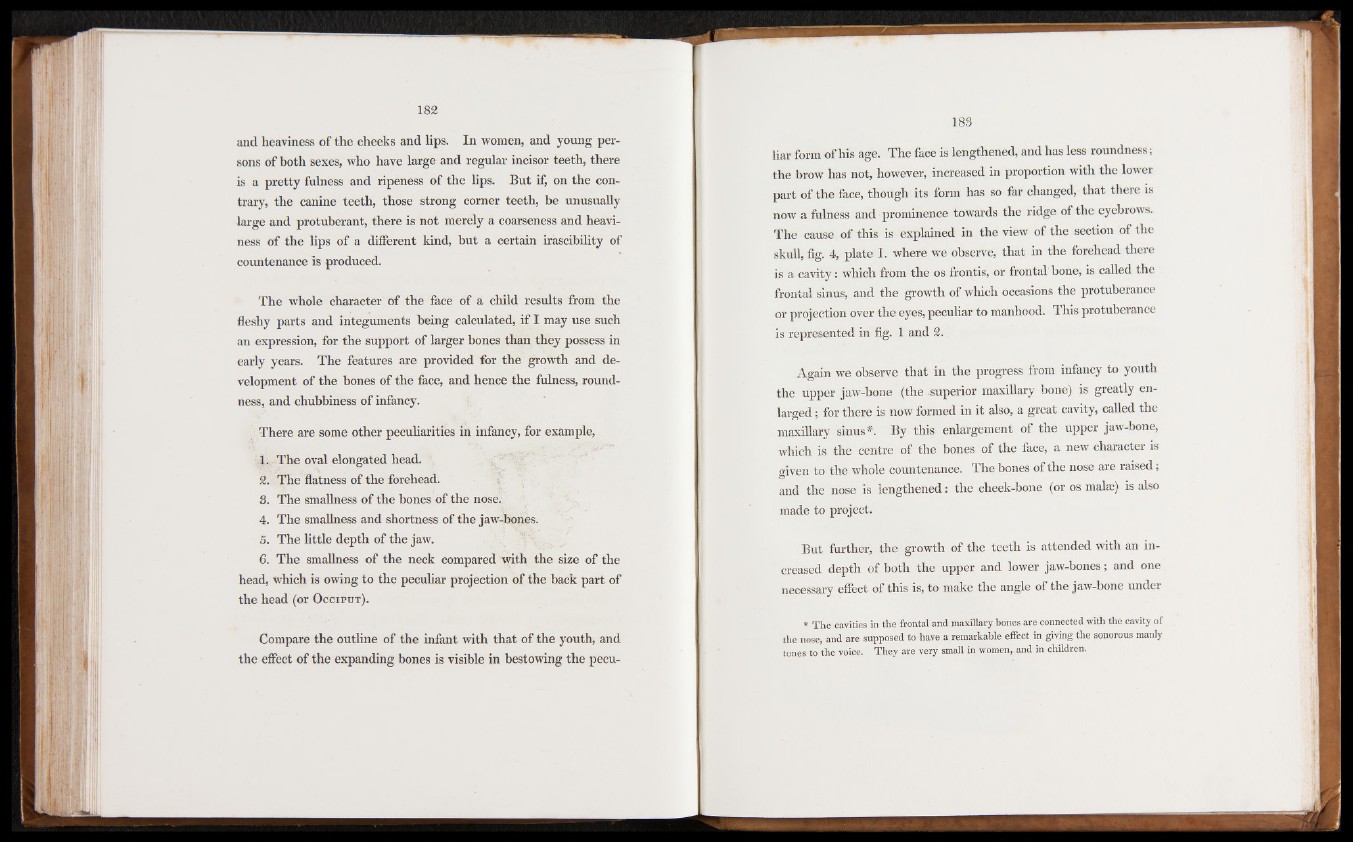
and heaviness of the cheeks and lips. In women, and young persons
of both sexes, who have large and regular incisor teeth, there
is a pretty fulness and ripeness of the bps. But if, on the contrary,
the canine teeth, those strong corner teeth, be unusually
large and protuberant, there is not merely a coarseness and heaviness
of the bps of a different kind, but a certain irascibihty of
countenance is produced.
The whole character of the face of a child results from the
fleshy parts and integuments being calculated, if I may use such
an expression, for the support of larger bones than they possess in
early years. The features are provided for the growth and development
of the bones of the face, and hence the fulness, roundness,
and chubbiness of infancy.
There are some other pecubarities in infancy, for example,
H I The oval elongated head. ■
2. The flatness of the forehead.
8. The smabness of the bones of the nose.:
4. The smallness and shortness of the jaw-bones.
5. The bttle depth of the jaw.
6. The smallness of the neck compared with the size of the
head, which is owing to the pecuhar projection of the back part of
the head (or Occiput).
Compare the outbne of the infant with that of the youth, and
the effect of the expanding bones is visible in bestowing the pecubar
form of his age. The face is lengthened, and has less roundness;
the brow has not, however, increased in proportion with the lower
part of the face, though its form has so far changed, that there is
now a fulness and prominence towards the ridge of the eyebrows.
The cause of this is explained in the view of the section of the
skull, fig. 4, plate I. where we observe, that in the forehead there
is a cavity: which from the os frontis, or frontal bone, is cabed the
frontal sinus, and the growth of which occasions the protuberance
or projection over the eyes, peculiar to manhood. This protuberance
is represented in fig. 1 and 2..
Again we observe that in the progress from infancy to youth
the upper jaw-bone (the .superior maxillary bone) is greatly enlarged
; for there is now formed in it also, a great cavity, cabed the
maxillary sinus*. By this enlargement of the upper jaw-bone,
which is the centre of the bones of the face, a new character is
given to the whole countenance. The bones of the nose are raised,
and the nose is lengthened: the cheek-bone (or os mala;) is also
made to project.
But further, the growth of the teeth is attended with an increased
depth of both the upper and lower jaw-bones; and one
necessary effect of this is, to make the angle of the jaw-bone under
* The cavities in the frontal and maxillary bones are connected with the cavity of
the nose, and are supposed to have a remarkable effect in giving the sonorous manly
tones to the voice. They are very small in women, and in children.